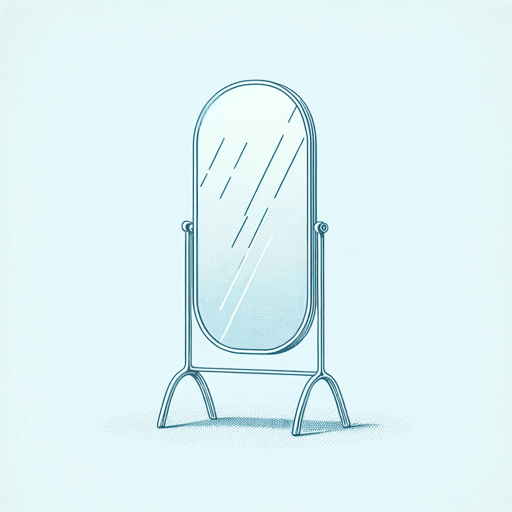47 pages • 1 hour read
Yukio MishimaConfessions of a Mask
Fiction | Novel | Adult | Published in 1949A modern alternative to SparkNotes and CliffsNotes, SuperSummary offers high-quality Study Guides with detailed chapter summaries and analysis of major themes, characters, and more.
Summary and Study Guide
Overview
Confessions of a Mask is a novel by Yukio Mishima, first published in Japan in 1949. The novel takes place during and immediately after World War II and centers on the struggles of a young man named Kochan. It has significant elements of the coming-of-age (bildungsroman) and queer literature genres, as Kochan is a closeted gay man trying to navigate his complex inner life and sexuality in contrast with his carefully controlled outer persona. The novel made Mishima a celebrity, and to this day, scholars regard it as a hallmark of postwar Japanese literature. Confessions of a Mask represents Mishima's trademark style, which blends Japanese and Western styles of writing through lush prose and metaphor. Kochan’s life and interests in Confessions of a Mask so resemble Mishima’s own that many have called it a fictionalized autobiography or memoir. After the publication of Confessions of a Mask when he was only 24, Mishima’s career became varied and infamous. He wrote 33 additional novels and many other literary works, but also achieved fame in other spheres; he was a model and an ardent Japanese nationalist. Mishima’s death by seppuku in 1970 after a failed military coup cemented his reputation and continues to illuminate the themes of death and nationalism haunting most of his literary works.
This guide uses the Meredith Weatherby translation, published by New Directions.
Content Warning: The source material contains references to suicidal ideation, gore, and cannibalism, and uses outdated language regarding sexual orientation.
Plot Summary
The novel begins with the protagonist, Kochan, describing in lyrical detail his memory of his own birth. He admits the memory is likely false, but he insists that, regardless of the facts, he still passionately believes that his constructed memory is true.
Kochan then introduces his family, who suffered a decline in status long before his birth. Soon after his birth, his grandmother took him to live with her in her upstairs room on the pretense of keeping him safe from injury and sickness. He spent much of his childhood under her care, forbidden from playing with other boys and forced to sleep in her room. Kochan guides the narrative through his earliest memories, exploring his fascination with death and struggling to understand his attraction to men. He is chronically ill in childhood, and he frequently becomes incapacitated and even comes close to death as a result of his illness. He is delighted by playing games of war and imagining himself and others dying noble deaths on the battlefield.
His first inklings of same-sex attraction manifest more as attraction to the concept of tragedy; soldiers, both fictional and real, attract his attention. He sees an image of Joan of Arc in knightly armor and becomes fixated on romantic fantasies of the knight’s noble death. When he learns that the knight in the picture is a woman disguised as a man, he feels profoundly betrayed. The titular mask of the novel begins to take shape as he learns to hide his fascinations with death and grows aware of his own othered place in the world. When, as a child, he dresses in his mother’s clothes to mimic a theater character, he feels most himself, but his family’s shame at his behavior quickly shunts him into cold repression.
As Kochan grows older, he details his exploration of his sexuality; he finds himself aroused both by men and by gore as he transitions from conceptual attraction to physical desire. His sexual awakening comes from a nude portrait of St. Sebastian pierced by arrows; after ejaculating to it, he writes a prose poem about the saint, included in the novel’s text.
Kochan's parents enroll him in a strict middle school, although his parents have him live at home to protect his innocence. He falls in love with a “delinquent” named Omi and becomes obsessed with him, particularly his bodily strength and masculinity. After some time, he realizes that he is jealous of Omi’s body and renounces his love for him, devoting himself to strengthening his own frail body and achieving ideal masculinity. Despite this commitment, he becomes sicker, developing anemia and beginning to create sexual fantasies of cannibalism and blood.
As Kochan grows older, he begins to realize that he does not experience the attraction to women his peers do. He tries to find some personal failing to explain this absence and fixates on his experiences with women, none of which are sexual or cause him to feel attraction. After going to university, he befriends a young soldier named Kusano and eventually forces himself to form an illusory crush on Kusano’s younger sister Sonoko.
Kochan develops a brief sickness that prevents the army from drafting him. Instead, he tends to Kusano’s family while his friend is at war, growing closer to Sonoko during this time. His attempts to develop attraction for her end in failure. As she begins to take their relationship more seriously, and as talk of marriage approaches, self-hatred and frustration consume Kochan. He breaks off their relationship.
After ending their relationship, Kochan drifts. Sonoko marries another man and Kochan’s sister dies, leaving him alone. He tries to reconnect with Sonoko, against propriety. On one such dalliance, they go dancing, but Kochan sees a handsome young delinquent and daydreams about the latter’s death instead of keeping his focus on Sonoko.
Related Titles
By Yukio Mishima



